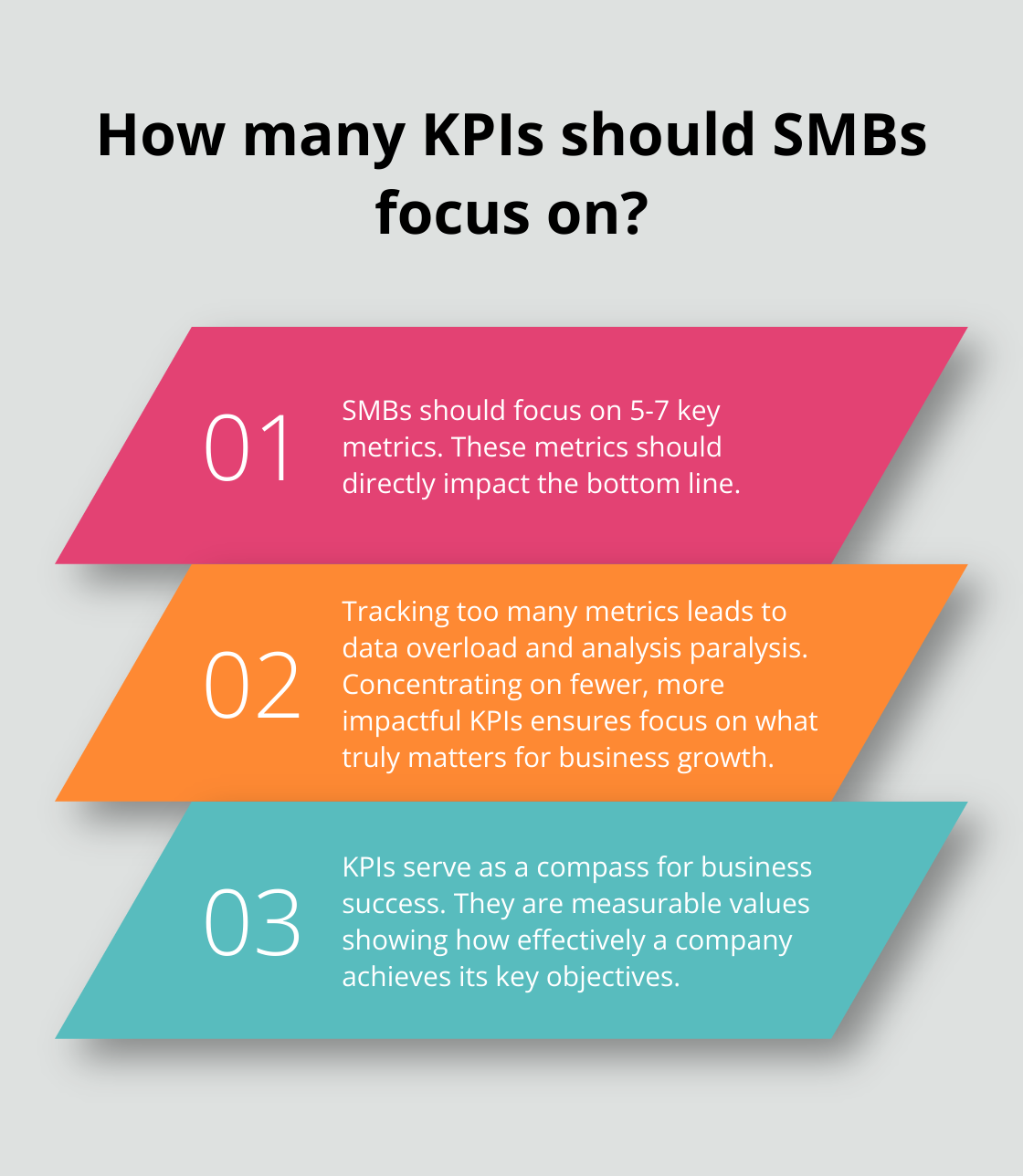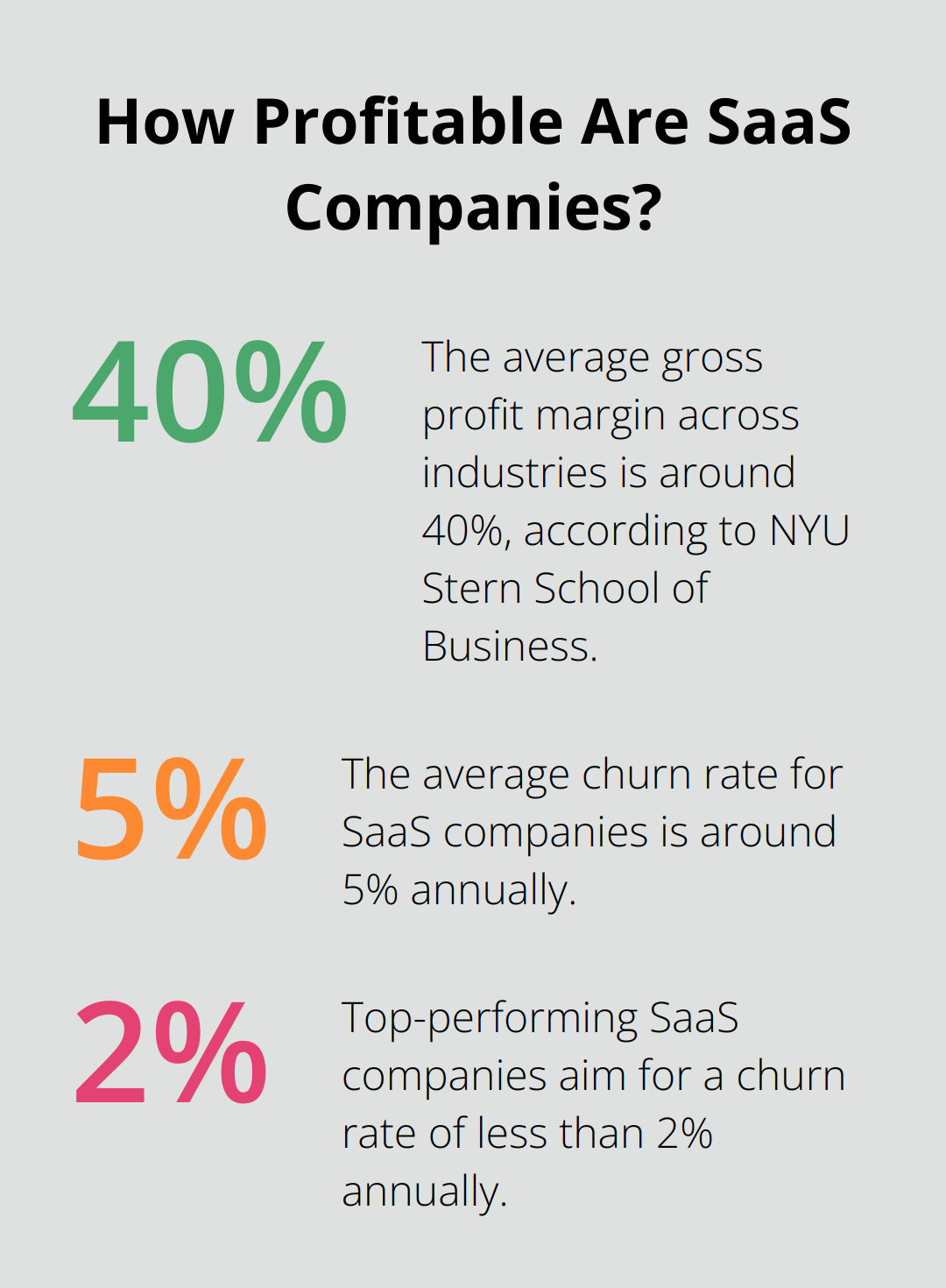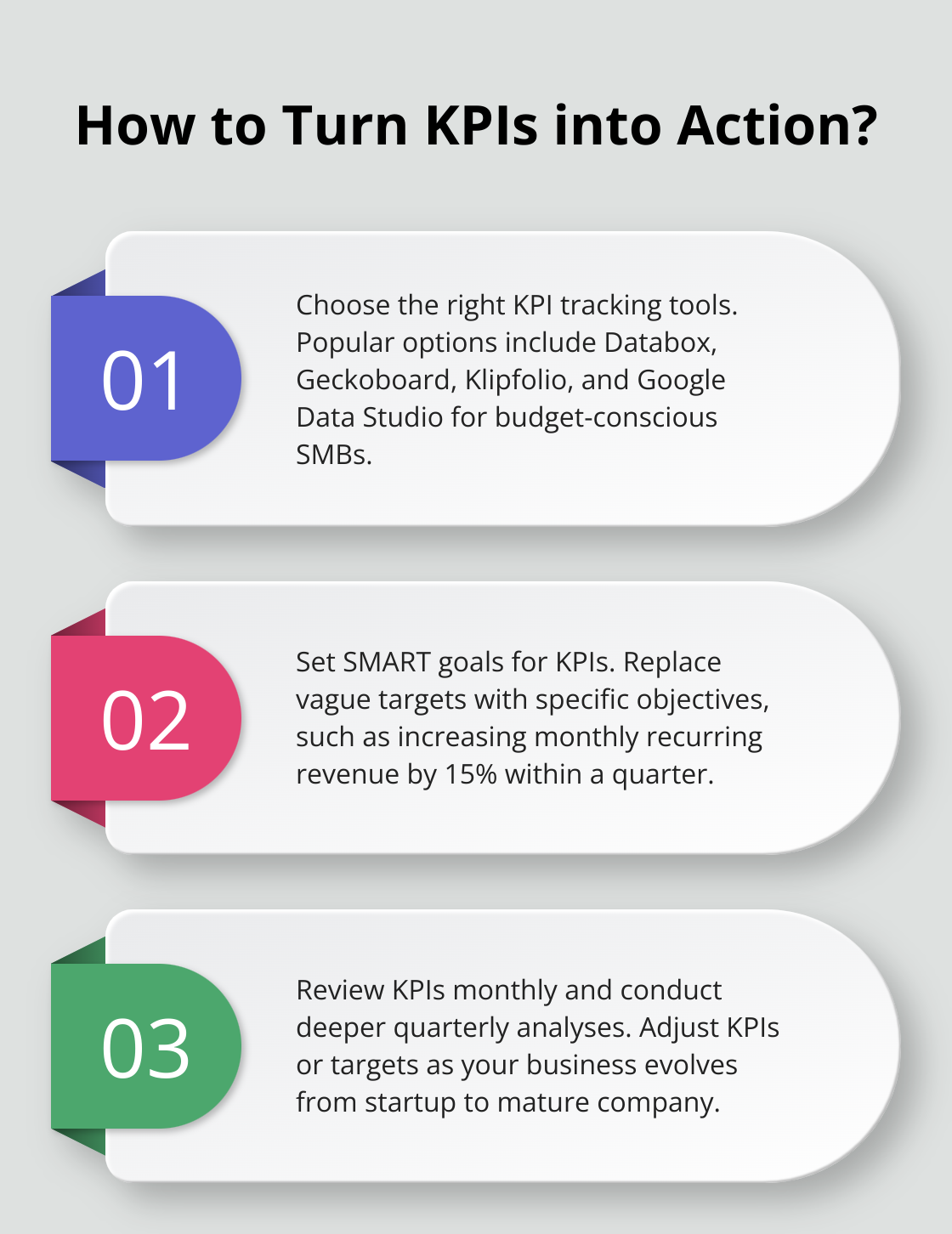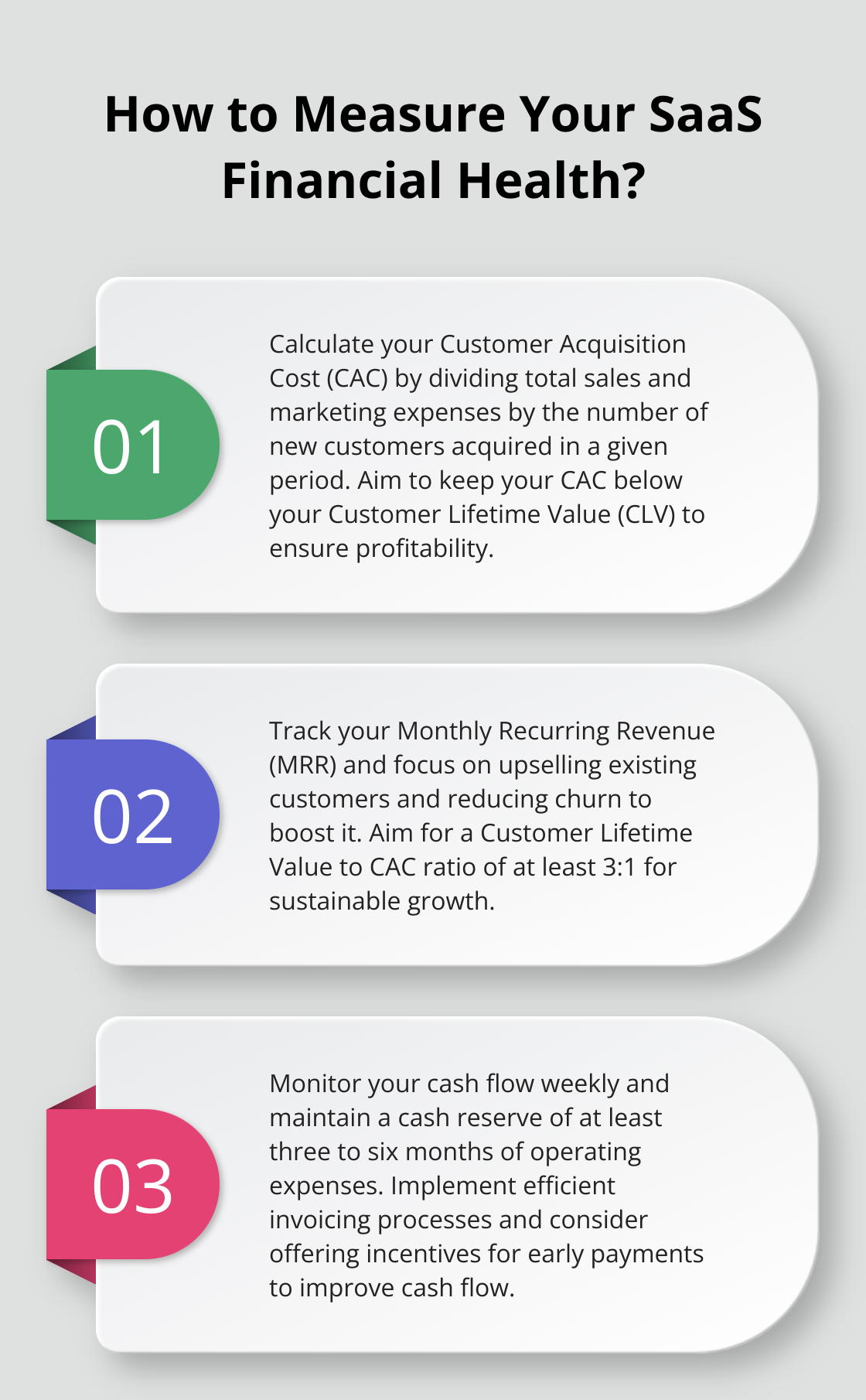At Made Simpler, we know that tracking the right growth metrics can make or break your small business. Key Performance Indicators (KPIs) are the vital signs of your company’s health and progress.
But with countless metrics to choose from, how do you know which ones truly matter for your SMB’s growth? In this post, we’ll cut through the noise and focus on the KPIs that will drive your business forward.
Why KPIs Matter for Your SMB
The Compass of Business Success
Key Performance Indicators (KPIs) serve as the compass that guides your small business to success. These measurable values show how effectively your company achieves its key objectives. The right KPIs can transform a struggling SMB into a thriving enterprise.
Data-Driven Decision Making
Tracking the right KPIs allows you to make data-driven decisions. Instead of relying on gut feelings, you’ll have concrete numbers to back up your strategies. A study by Deloitte found that the purpose was to isolate speed as a performance metric and observe if there was a true correlation to conversion funnel progress.
Avoiding Common Pitfalls
The Trap of Metric Overload
Many SMBs track too many metrics, which leads to data overload and analysis paralysis. Try to focus on 5-7 key metrics that directly impact your bottom line. This approach ensures you concentrate on what truly matters for your business growth.
Beware of Vanity Metrics
Another mistake is choosing vanity metrics that look good but don’t drive real growth. For instance, social media followers might impress (but don’t pay the bills), while conversion rate directly affects your revenue.
Tailoring KPIs to Your Business Model
There’s no one-size-fits-all approach to KPIs. What works for an e-commerce store won’t necessarily apply to a SaaS startup. It’s essential to choose metrics that align with your specific business model and goals.
The Action-Insight Loop
The goal isn’t just to track numbers, but to use those insights to drive action. Regular review and adjustment of your KPIs (at least quarterly) ensure they remain relevant as your business evolves. With the right metrics in place, you’ll equip your SMB to steer towards sustainable growth and success.

Now that we understand why KPIs matter, let’s explore the essential metrics that can truly impact your SMB’s growth trajectory.
7 KPIs That Drive SMB Growth
Customer Acquisition Cost (CAC)
CAC measures your spending to gain a new customer. Calculate it by dividing your total sales and marketing expenses by the number of new customers acquired in a given period. A lower CAC indicates more efficient marketing and sales processes. Try to keep your CAC below your Customer Lifetime Value (CLV) to ensure profitability.
Customer Lifetime Value (CLV)
CLV estimates the total revenue a customer will generate over their entire relationship with your business. Calculate CLV by multiplying the average revenue per customer by the customer lifetime. A higher CLV justifies higher acquisition costs and indicates strong customer retention. Strive for a CLV to CAC ratio of at least 3:1 for sustainable growth.
Monthly Recurring Revenue (MRR)
MRR is the predictable total revenue generated by your business from all active subscriptions in a month. It’s a critical metric for subscription-based businesses. To boost MRR, focus on upselling existing customers and reducing churn. A study by ProfitWell shows that companies prioritizing MRR growth see a 2x increase in company valuation compared to those that don’t.
Churn Rate
Churn rate measures the percentage of customers who stop using your product or service over a given period. A high churn rate can severely impact your growth potential. To reduce churn, invest in customer success programs and regularly gather feedback to improve your offering. The average churn rate for SaaS companies is around 5% annually, but top-performing companies aim for less than 2%.
Net Promoter Score (NPS)
NPS gauges customer mindset and predicts sales growth. NPS has been widely adopted by managers as a measure of customer mindset and predictor of sales growth. Survey your customers regularly and act on their feedback to improve your NPS.
Cash Flow
Cash flow measures the net amount of cash moving in and out of your business. Positive cash flow is essential for covering operational costs and investing in growth. Monitor your cash flow weekly and maintain a cash reserve of at least three to six months of operating expenses. Implement efficient invoicing processes and consider offering incentives for early payments to improve cash flow.
Gross Profit Margin
Gross profit margin is the percentage of revenue that exceeds the cost of goods sold. Calculate it by subtracting the cost of goods sold from total revenue and dividing by total revenue. A higher gross profit margin indicates better efficiency in producing and selling your products or services. According to NYU Stern School of Business, the average gross profit margin across industries is around 40% (but it varies significantly by sector).

These seven KPIs provide a comprehensive view of your SMB’s performance. Track them consistently to identify areas for improvement and drive sustainable growth. In the next section, we’ll explore how to implement and analyze these KPIs effectively to maximize their impact on your business.
How to Turn KPIs into Action
Choose the Right Tools
Selecting appropriate KPI tracking tools is essential. While spreadsheets suffice for basic tracking, dedicated software often provides deeper insights and saves time. Popular options include Databox, Geckoboard, and Klipfolio. These platforms offer real-time dashboards and integrations with various data sources.

For SMBs with budget constraints, Google Data Studio creates comprehensive reports by pulling data from multiple sources at no cost. The tool you select should align with your specific KPIs and business needs.
Set SMART Goals
Use the SMART framework when setting KPI targets: Specific, Measurable, Attainable, Relevant, and Time-bound. Replace vague goals like “increase sales” with specific objectives such as “increase monthly recurring revenue by 15% within the next quarter.”
Set realistic benchmarks. Industry averages provide a starting point, but your goals should reflect your unique business situation. For example, the average churn rate for SaaS companies is about 5% annually, but your target might be higher if you’re a new entrant in the market.
Review and Adjust Regularly
KPIs require constant attention. Schedule monthly reviews to assess progress and identify trends. Conduct a deeper analysis quarterly to determine if your KPIs still align with your business objectives.
Adjust your KPIs or targets if they no longer serve your goals. As your business evolves, so should your metrics. A startup might focus heavily on user acquisition initially, but shift towards retention and profitability as it matures.
Transform Insights into Actions
The true value of KPIs lies in the actions they inspire. If your Customer Acquisition Cost rises, investigate the cause. Are your marketing campaigns ineffective? Is your sales process too lengthy? Use these insights to refine your strategies.
A declining Net Promoter Score should prompt immediate customer feedback sessions to address pain points. Every KPI should lead to actionable steps for improvement.
Leverage Technology for KPI Management
Try to harness the power of AI and machine learning tools to analyze your KPI data more effectively. These technologies can identify patterns and trends that might be missed by human analysis alone.
Consider implementing a Business Intelligence (BI) tool (such as Tableau or Power BI) to visualize your KPI data. These tools can create interactive dashboards that make it easier to spot trends and anomalies in your metrics.
Final Thoughts
Tracking the right growth metrics can determine the success of small and medium-sized businesses. We explored seven essential KPIs that drive SMB growth: Customer Acquisition Cost, Customer Lifetime Value, Monthly Recurring Revenue, Churn Rate, Net Promoter Score, Cash Flow, and Gross Profit Margin. These metrics provide a comprehensive view of business health and growth potential.

Effective KPI implementation requires tailoring metrics to your specific business model and goals. What works for one company may not suit another. Take time to understand which KPIs align best with your objectives and industry benchmarks (start small if needed, focusing on just a few key metrics).
Don’t let another day pass without harnessing the power of KPIs. Begin tracking these growth metrics today, and watch as your data-driven decisions propel your SMB towards sustainable success. Made Simpler offers AI-enhanced marketing solutions to help you streamline your efforts and focus on the metrics that truly matter for your business growth.

